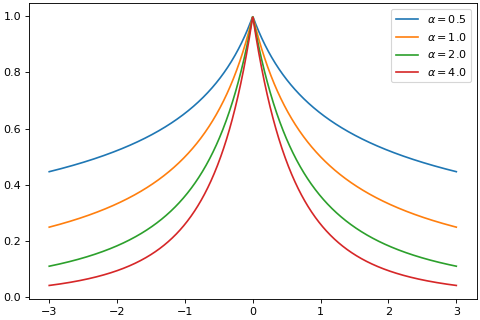brainpy.math.surrogate.q_pseudo_spike#
- brainpy.math.surrogate.q_pseudo_spike(x, alpha=2.0)[source]#
Judge spiking state with the q-PseudoSpike surrogate function [1].
If origin=False, computes the forward function:
\[\begin{split}g(x) = \begin{cases} 1, & x \geq 0 \\ 0, & x < 0 \\ \end{cases}\end{split}\]If origin=True, computes the original function:
\[\begin{split}\begin{split}g(x) = \begin{cases} \frac{1}{2}(1-\frac{2x}{\alpha-1})^{1-\alpha}, & x < 0 \\ 1 - \frac{1}{2}(1+\frac{2x}{\alpha-1})^{1-\alpha}, & x \geq 0. \end{cases}\end{split}\end{split}\]Backward function:
\[g'(x) = (1+\frac{2|x|}{\alpha-1})^{-\alpha}\]>>> import brainpy as bp >>> import brainpy.math as bm >>> import matplotlib.pyplot as plt >>> xs = bm.linspace(-3, 3, 1000) >>> bp.visualize.get_figure(1, 1, 4, 6) >>> for alpha in [0.5, 1., 2., 4.]: >>> grads = bm.vector_grad(bm.surrogate.q_pseudo_spike)(xs, alpha) >>> plt.plot(bm.as_numpy(xs), bm.as_numpy(grads), label=r'$\alpha=$' + str(alpha)) >>> plt.legend() >>> plt.show()
(
Source code,png,hires.png,pdf)
- Parameters:
- Returns:
out – The spiking state.
- Return type:
jax.Array
References
